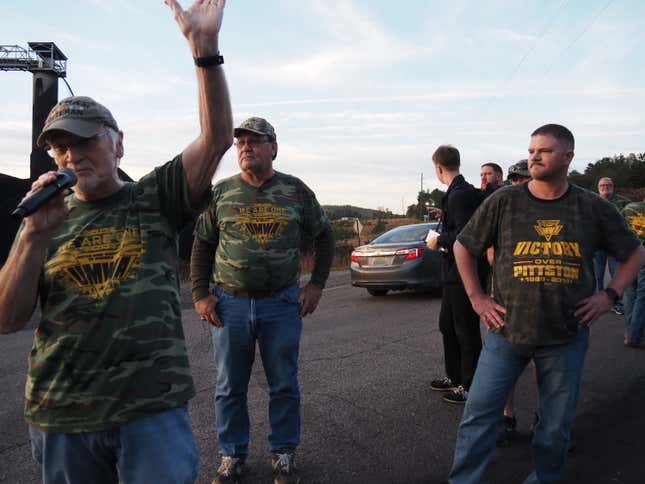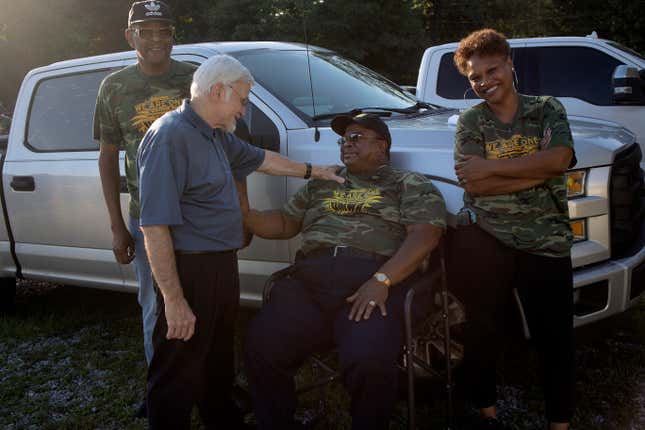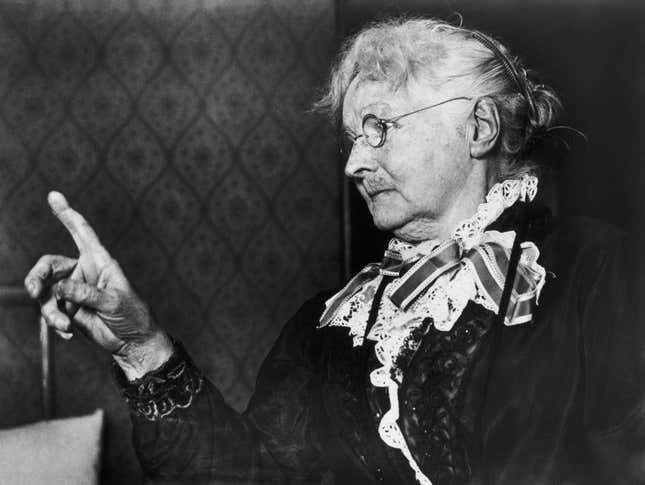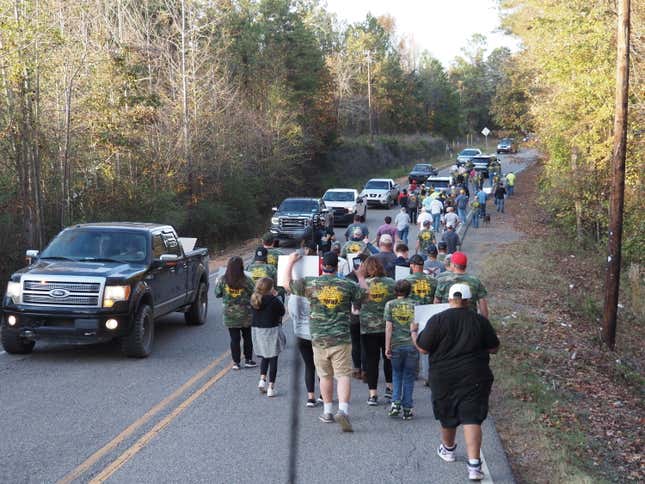Alabama Women Put Their Bodies on the Line to Keep a Miners’ Strike Alive
The Warrior Met Coal strike just hit a historic 600 days, in large part due to the dedication of wives, mothers, and sisters.
In DepthIn Depth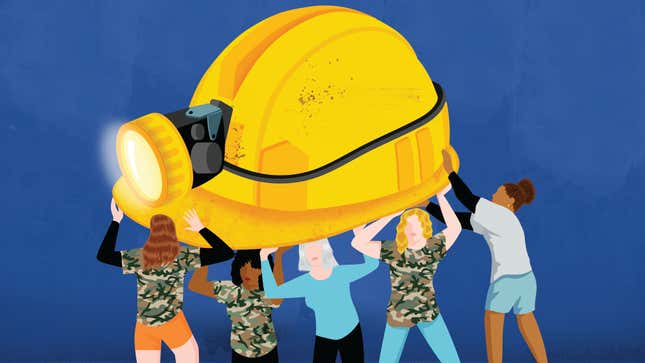
Illustration: Mitch Blunt
“You don’t mess with a Southern mama.”
The woman said it with a smile in her voice, and in any other context, it would have sounded impossibly cliché: a real Home Goods coffee mug kind of vibe. But I was leaned up against a truck out front of a union hall in rural Alabama, chatting with a coal miner’s wife who’s spent the past 19 months supporting her striking husband and keeping the families of 900 other striking coal miners afloat, and who woke up that morning prepared to go to jail. Beneath that smile lay a warning.
Cigarettes winked in the darkness like lightning bugs, as burly men dressed in camo and coveralls huddled in small groups all around us. Inside the hall, members of the union’s auxiliary, an affiliated group of supporters (historically, women related to union members plus union retirees), dished out slices of donated pizza, keeping one eye on the kids running around and another on the long line in front of them. It was an early November evening in Brookwood, Alabama, and the miners had been on strike from Warrior Met Coal for 587 days. Earlier that evening, they had defied a court injunction levied against them by Warrior Met management that forbade them from gathering or blocking scabs from accessing company property, and marched up a tree-lined backroad to the entrance of Mine No. 4. The original plan had called for a group of women to block the road, and four of those women had volunteered to take their fight to the Tuscaloosa County Jail.
“We were like, yeah, we want to do this, because we see the human side of this,” Cheri Goodwin, an auxiliary member whose husband is currently on strike, told me during a quiet moment after the march, when the miners had gathered back at the union hall for their weekly rally. “We are the human side. You need people to see the mothers. We need people to see the retired coal miner women, who have been underground, standing next to us.”
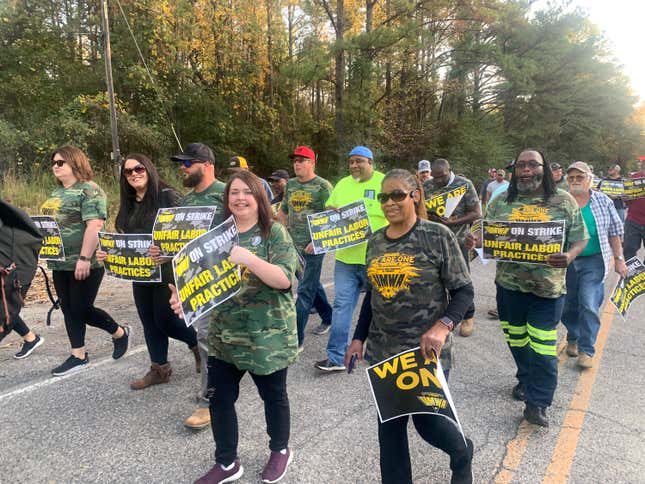
However, news of the planned march had gotten back to Warrior Met earlier that week; Brookwood is a small town, and people knew something was coming, if not exactly what. After the coal company’s lawyers sent the union a threatening letter reminding them of the injunction and promising to come down hard on anyone who gave them the merest scrap of a reason—which could have hit any woman who got arrested with a $200,000 fine and 30 days in jail—the union changed tack. While they went forward with the march, they asked the women to stand down… this time.
The Warrior Met Coal Strike Hits 600 Days
The same auxiliary members who volunteered to put their bodies on the line have spent countless hours cooking, cleaning, planning, and running a strike pantry that processes thousands of dollars in donations. Every week, the women fill hundreds of brown paper grocery bags with canned food and shelf-stable delicacies, like ramen noodles and Jell-O, and keep them ready for whichever strike families need one. (In September, rockstar activist Tom Morello joined them, and while his camera crew got a bit underfoot, they appreciated his help.) Deep bonds have been forged in that union hall and on the picket line and at the Mexican joint down the road, where the ladies like to go for margaritas after particularly long days. The longer the coal bosses stall, the stronger they become.
“You need people to see the mothers. We need people to see the retired coal miner women, who have been underground, standing next to us.”
“We are actually sitting there serving families, we’re handing bags to families, we’re getting to know these people,” Goodwin said. “Now, it’s not just our own families that we’re fighting for. They are our family, and we are in this together. They’re our brothers and sisters.”
She never expected that the strike would last this long; no one did. When the miners first walked out on April 1, 2021, their representatives at United Mine Workers of America (UMWA) had already been locked in negotiations with Warrior Met for months, working to hammer out a better contract than the one the miners were already working under. That contract was brutal—it slashed their pay, their benefits, their time off and sick days, and implemented a strict attendance system that gave them zero wriggle room for medical emergencies or family commitments. Five years prior, Warrior Met had swanned in from New York City and bought up the mine after its previous owners went bankrupt, and the workers had believed the company when it said it’d do right by them once it got a handle on operations. But then 2021 rolled around, and it became clear that Warrior Met had lied. The new contract it offered was nearly identical to the old one; and when the UMWA presented the miners with a tentative agreement on April 8, they voted it down.
-

-

-

-

-

-

-

-

-

-

-

-

-

-

-

-

-

-

-

-

-

-

-

-

-

-

-

-

-

-

-

-

-

-

-

-

-

-

-

-

